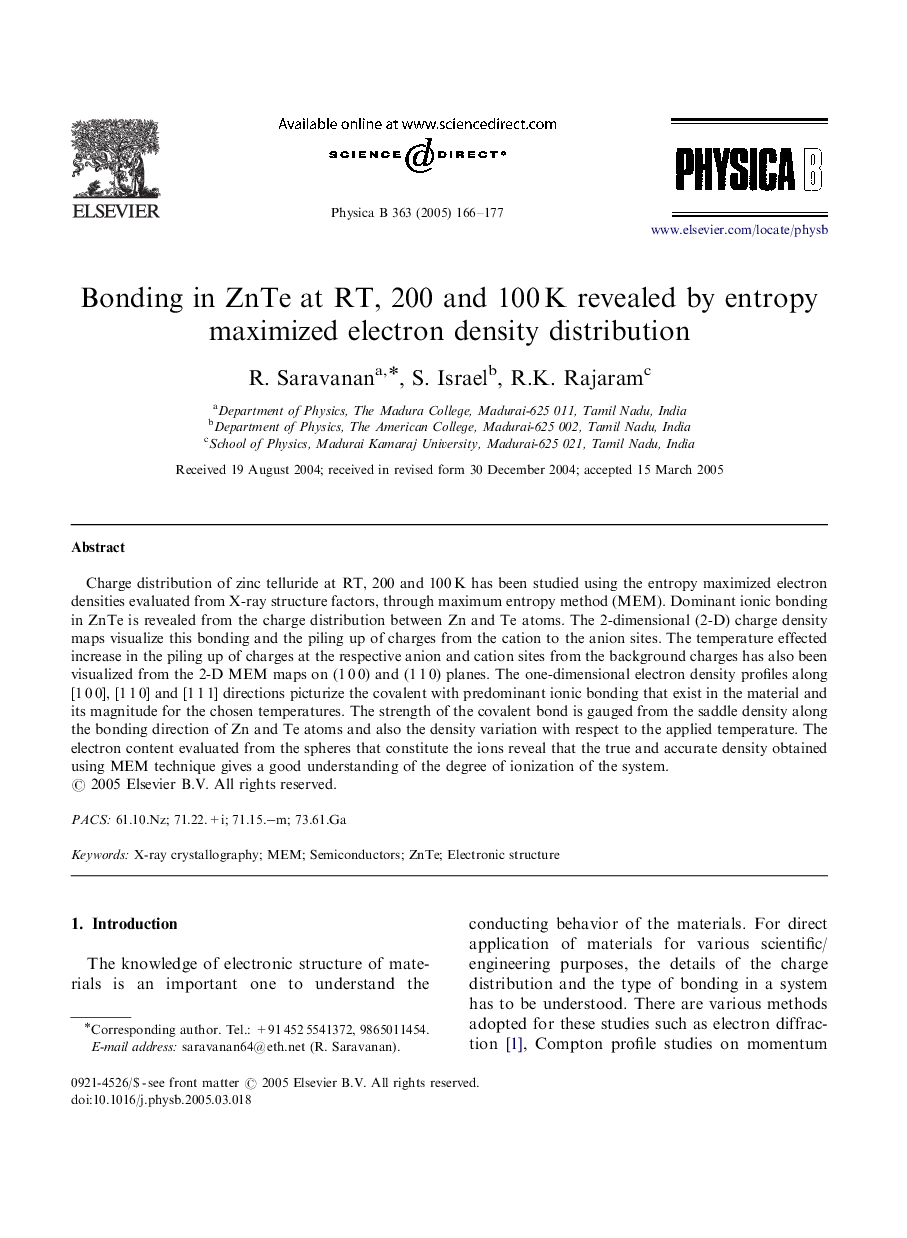| Article ID | Journal | Published Year | Pages | File Type |
|---|---|---|---|---|
| 9837593 | Physica B: Condensed Matter | 2005 | 12 Pages |
Abstract
Charge distribution of zinc telluride at RT, 200 and 100Â K has been studied using the entropy maximized electron densities evaluated from X-ray structure factors, through maximum entropy method (MEM). Dominant ionic bonding in ZnTe is revealed from the charge distribution between Zn and Te atoms. The 2-dimensional (2-D) charge density maps visualize this bonding and the piling up of charges from the cation to the anion sites. The temperature effected increase in the piling up of charges at the respective anion and cation sites from the background charges has also been visualized from the 2-D MEM maps on (1Â 0Â 0) and (1Â 1Â 0) planes. The one-dimensional electron density profiles along [1Â 0Â 0], [1Â 1Â 0] and [1Â 1Â 1] directions picturize the covalent with predominant ionic bonding that exist in the material and its magnitude for the chosen temperatures. The strength of the covalent bond is gauged from the saddle density along the bonding direction of Zn and Te atoms and also the density variation with respect to the applied temperature. The electron content evaluated from the spheres that constitute the ions reveal that the true and accurate density obtained using MEM technique gives a good understanding of the degree of ionization of the system.
Keywords
Related Topics
Physical Sciences and Engineering
Physics and Astronomy
Condensed Matter Physics
Authors
R. Saravanan, S. Israel, R.K. Rajaram,
